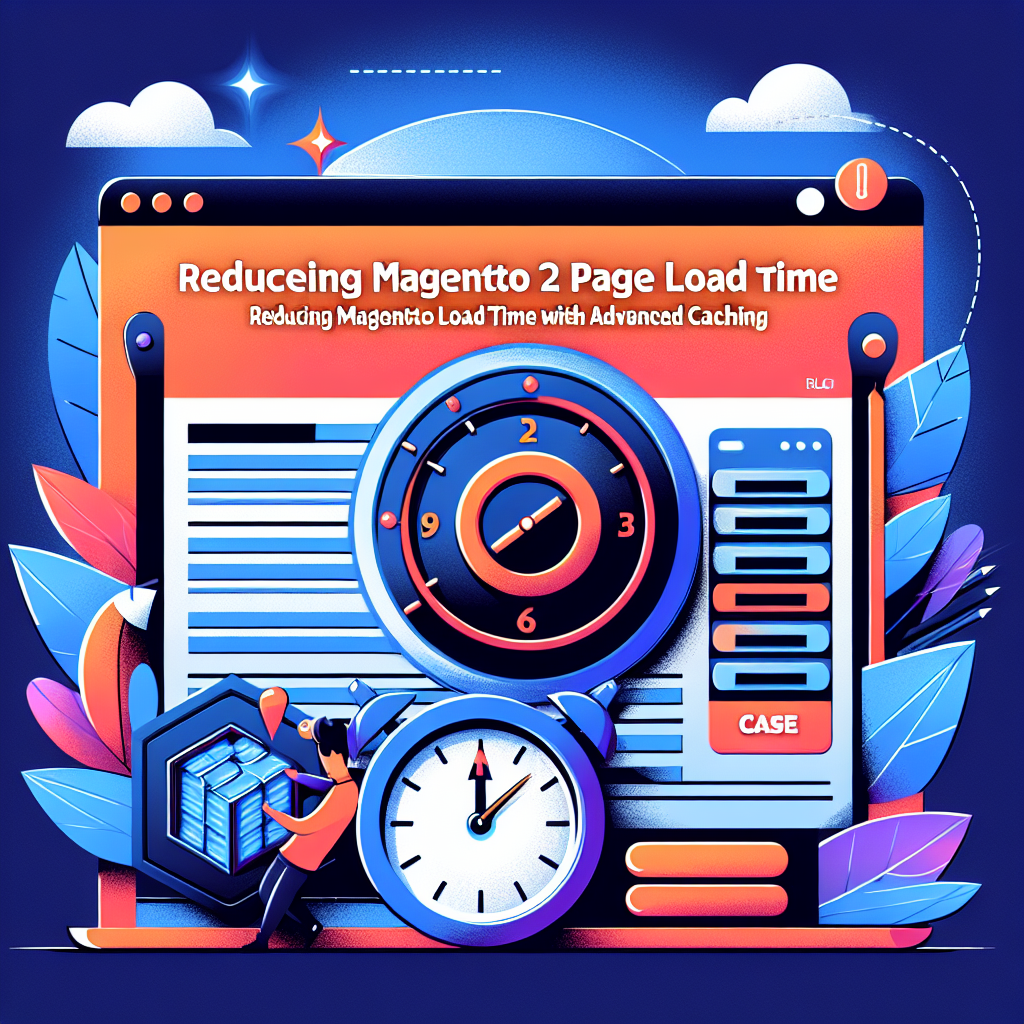How to Reduce Magento 2 Page Load Time with Advanced Caching

Why Page Load Time Matters for Your Magento 2 Store
Let’s be real—nobody likes waiting for a slow website to load. In eCommerce, every second counts. Studies show that a 1-second delay in page load time can lead to a 7% drop in conversions. That’s lost sales, frustrated customers, and lower search rankings. The good news? Magento 2 has powerful caching tools to speed things up.
In this guide, we’ll break down the best caching strategies to reduce your Magento 2 page load time. Whether you’re new to caching or just need a refresher, we’ll keep it simple and actionable.
Understanding Magento 2 Caching Basics
Before diving into advanced caching, let’s cover the basics. Caching stores frequently accessed data (like product pages or category listings) so your server doesn’t have to rebuild them from scratch every time a visitor loads your site. Magento 2 supports several caching types:
- Full Page Cache (FPC) – Saves entire HTML pages for faster delivery.
- Block Cache – Stores individual page components (blocks).
- Configuration Cache – Speeds up system configuration loading.
- Layout Cache – Caches page layouts to reduce rendering time.
By default, Magento 2 uses its built-in caching, but we can do better with advanced setups.
Step 1: Enable Full Page Cache (FPC)
FPC is Magento’s most powerful caching tool. It stores fully rendered pages, so returning visitors see them almost instantly. Here’s how to enable it:
- Log in to your Magento Admin Panel.
- Go to Stores > Configuration > Advanced > System > Full Page Cache.
- Set Caching Application to Built-in Cache (or Varnish if you’re using it—more on that later).
- Save the config and flush the cache (System > Cache Management > Flush Magento Cache).
Step 2: Use Varnish Cache for Blazing Speed
Magento’s built-in FPC is good, but Varnish Cache is even better. Varnish is a reverse proxy that stores pages in memory, reducing server load and speeding up delivery.
How to Set Up Varnish with Magento 2
- Install Varnish on your server (Ubuntu example):
- Configure Varnish to work with Magento:
- Update Magento Config to use Varnish:
- Restart Varnish:
sudo apt update
sudo apt install varnishsudo nano /etc/varnish/default.vclPaste the Magento 2 VCL configuration (get it from Magento’s GitHub).
Go to Stores > Configuration > Advanced > System > Full Page Cache and select Varnish Cache.
sudo systemctl restart varnishBoom! Your site just got a major speed boost.
Step 3: Optimize with Redis for Session & Cache Storage
Redis is an in-memory data store that Magento can use for caching sessions and database queries. It’s way faster than file-based caching.
Setting Up Redis for Magento 2
- Install Redis (Ubuntu example):
- Configure Magento to Use Redis:
- Enable Redis for Sessions (optional but recommended):
sudo apt install redis-serverEdit app/etc/env.php and add:
'cache' => [
'frontend' => [
'default' => [
'backend' => 'Cm_Cache_Backend_Redis',
'backend_options' => [
'server' => '127.0.0.1',
'port' => '6379',
'database' => '0'
]
]
]
]'session' => [
'save' => 'redis',
'redis' => [
'host' => '127.0.0.1',
'port' => '6379',
'database' => '1'
]
]Step 4: Leverage Browser Caching
Browser caching stores static files (like images, CSS, and JavaScript) on the visitor’s device, so they don’t reload every time. Here’s how to enable it in Magento 2:
- Edit your .htaccess file (for Apache servers):
- For Nginx, add this to your server block:
<IfModule mod_expires.c>
ExpiresActive On
ExpiresByType image/jpg "access 1 year"
ExpiresByType image/jpeg "access 1 year"
ExpiresByType image/gif "access 1 year"
ExpiresByType image/png "access 1 year"
ExpiresByType text/css "access 1 month"
ExpiresByType text/javascript "access 1 month"
ExpiresByType application/javascript "access 1 month"
</IfModule>location ~* \.(ico|jpg|jpeg|png|gif|svg|js|css|swf|eot|ttf|otf|woff|woff2)$ {
expires 365d;
add_header Cache-Control "public";
}Step 5: Enable Flat Catalog for Faster Product Loading
Magento’s EAV database structure is flexible but can slow down product queries. Enabling Flat Catalog simplifies this:
- Go to Stores > Configuration > Catalog > Catalog.
- Under Storefront, set Use Flat Catalog Category and Use Flat Catalog Product to Yes.
- Save and reindex (System > Index Management > Select All > Submit).
Step 6: Use a CDN for Global Speed
A Content Delivery Network (CDN) stores your static files on servers worldwide, reducing load times for international visitors. Popular options include Cloudflare, Fastly, and AWS CloudFront.
How to Integrate Cloudflare with Magento 2
- Sign up for a Cloudflare account.
- Update your domain’s nameservers to Cloudflare’s.
- In Magento Admin, go to Stores > Configuration > General > Web.
- Set Base URLs to use your Cloudflare domain (e.g.,
https://yourstore.com). - Enable HTTP/2 and Brotli compression in Cloudflare’s Speed settings.
Step 7: Optimize Images & Enable Lazy Loading
Heavy images slow down pages. Use these best practices:
- Compress images before uploading (tools like TinyPNG help).
- Enable lazy loading in Magento 2.4+ (it’s built-in).
- Use WebP format for smaller file sizes.
Step 8: Monitor & Fine-Tune Performance
After implementing caching, track performance with tools like:
- Google PageSpeed Insights – Identifies bottlenecks.
- New Relic – Monitors server performance.
- Magento Profiler – Helps debug slow queries.
Final Thoughts
Reducing Magento 2 page load time isn’t just about speed—it’s about keeping customers happy and boosting sales. By combining Full Page Cache, Varnish, Redis, and a CDN, you can cut load times by 50% or more.
Need help? Check out Magefine’s Magento hosting solutions and performance extensions to take your store to the next level.
Got questions? Drop them in the comments below!





